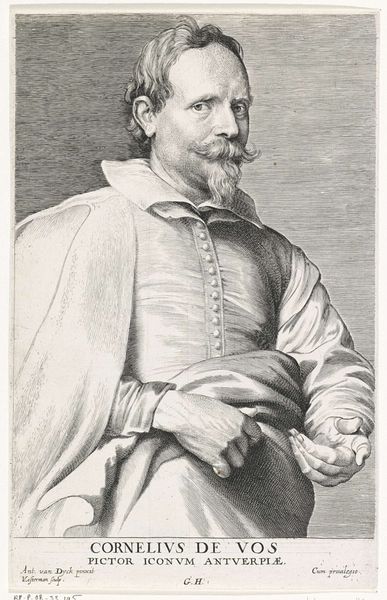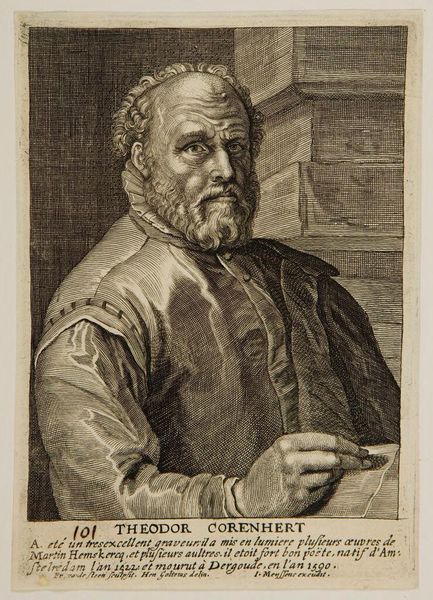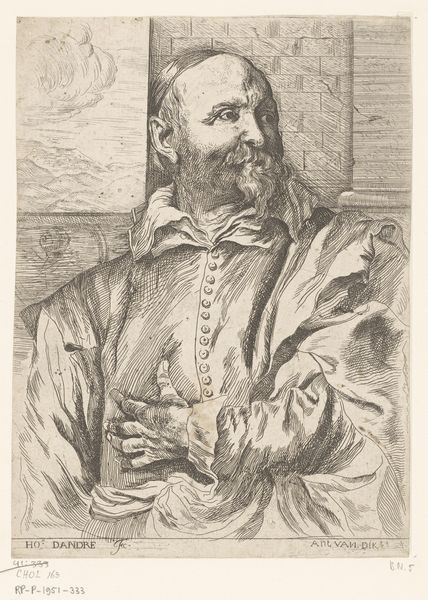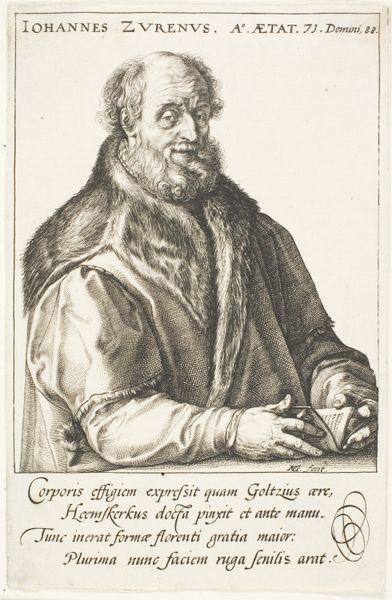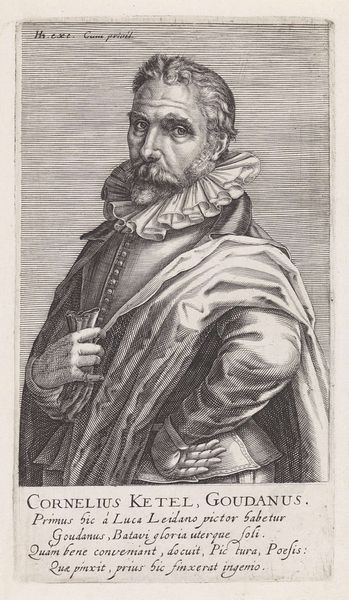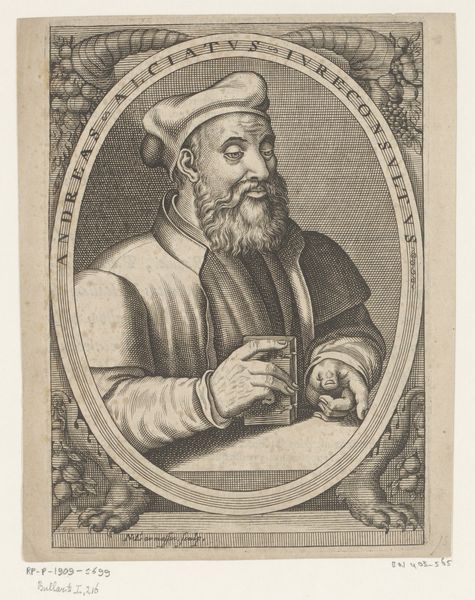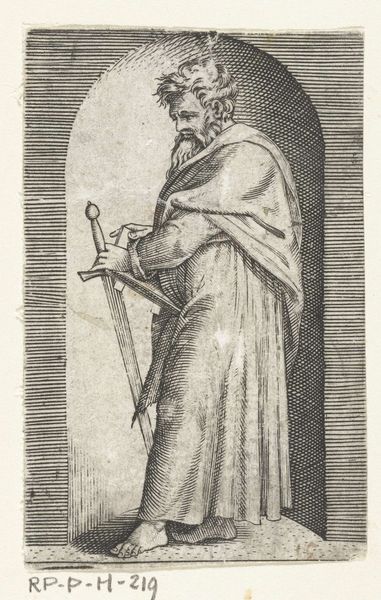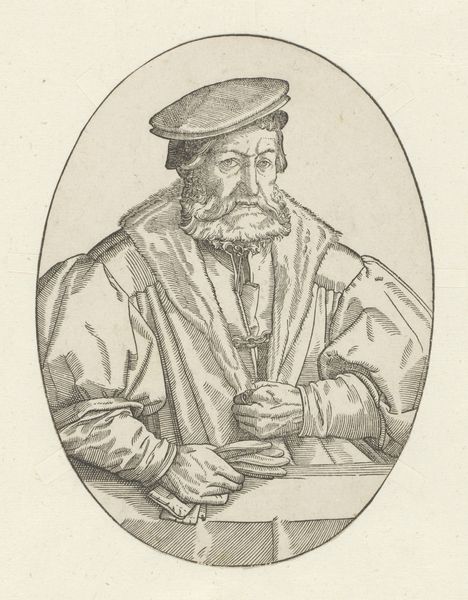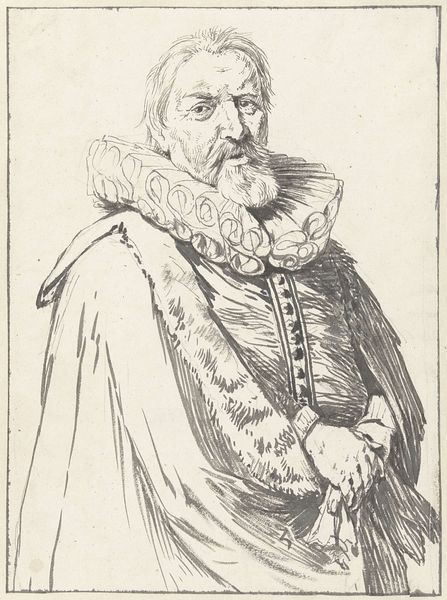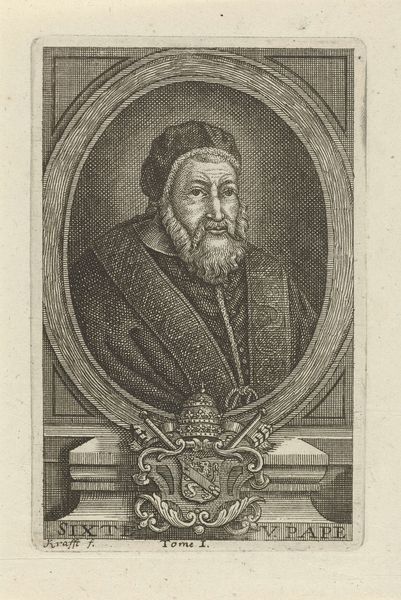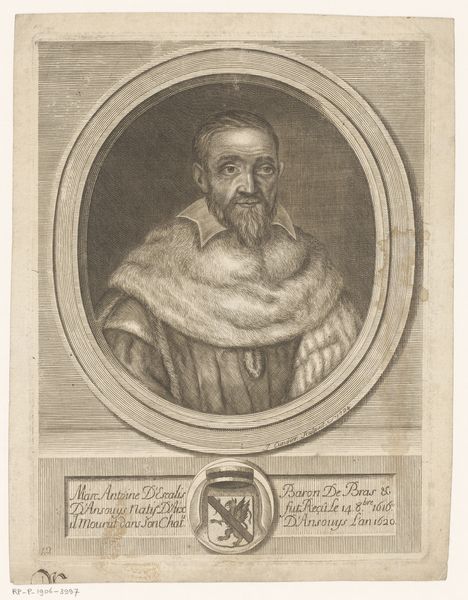
drawing, print, etching, paper
#
portrait
#
drawing
#
facial expression drawing
#
baroque
#
dutch-golden-age
# print
#
etching
#
caricature
#
paper
#
portrait reference
#
portrait drawing
Dimensions: 211 × 153 mm (image); 236 × 136 mm (plate); 249 × 169 mm (sheet)
Copyright: Public Domain
Curator: This is a print titled "Antoon Cornelissen," created sometime between 1630 and 1645. It's attributed to Lucas Emil Vorsterman and resides here at the Art Institute of Chicago. Editor: The gaze holds me – it’s penetrating! The subject, presumably Cornelissen, appears intelligent, but also weary or perhaps burdened by thought. It's masterfully rendered. Curator: Absolutely. Consider Vorsterman’s technique. He used etching, a printmaking process, on paper to create this compelling image. We must remember the conditions of printmaking, each one is essentially produced to meet some demand. This likely reproduces a painting for distribution. Editor: That adds another layer. Beyond it simply being a reproduction, etching allowed Vorsterman to disseminate Cornelissen’s image widely. The portrait takes on new life, no longer fixed in a single location but multiplied and traveling. What do you think Cornelissen represented to the Dutch Golden Age? Curator: Considering the prominence given to burghers during this era, and indeed this work being in a 'portrait' style. He might have simply been well-to-do! This work emphasizes the emergent role that people from all stations play within the developing Dutch markets for artistic production. Editor: Yes, it reflects the democratization of portraiture. This is someone who, while perhaps not royalty, occupied an important place in society and could likely afford to have himself memorialized and broadcast via print. Notice also how his eyes look upward slightly, maybe reflecting aspiration? Or maybe more literally, his hope is in something unseen beyond material constraints. Curator: True, Vorsterman expertly uses light and shadow through the etched lines. Notice how the lines build up into tonality within the face. This attention is critical as prints must be considered in contrast to more unique and traditionally valued methods of artwork creation. What did these portraits mean? Editor: I see Cornelissen's image as an emblem of the rising merchant class – a powerful image, crafted to leave a legacy and cement his place in the collective visual memory of the time. Curator: Examining this print reminds us that even seemingly straightforward portraits are loaded with the values of their time and demonstrate an emergent place for markets within art making. Editor: Precisely, it makes us question the very nature of representation, its impact, and its persistence.
Comments
No comments
Be the first to comment and join the conversation on the ultimate creative platform.

